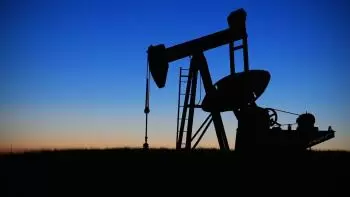
Petroleum is a naturally occurring, brownish-black liquid found in rock formations beneath the Earth's surface. It is commonly called “crude oil" or "oil," and its components are used to make a wide variety of products.
Petroleum is a natural resource formed by a complex inhomogeneous mixture of hydrocarbons composed of hydrogen and carbon. Coal, oil, and natural gas are formed similarly due to heat and pressure exerted over organic material for millions of years.
Despite its numerous benefits, petroleum is a fossil fuel with some environmental drawbacks. The burning of fossil fuels releases greenhouse gases into the atmosphere, contributing to climate change. Additionally, oil spills can cause serious pollution problems if they occur in sensitive ecosystems such as coral reefs or mangrove forests.
The discovery of oil is attributed to Edwin Drake.
Why is petroleum called black gold?
The reason why petroleum is called black gold is that it is one of the world's most valuable natural resources, particularly as a source of energy. In addition, it has a high economic value and is essential to many industries, including transport, energy, and other sectors.
Crude oil is the raw material for numerous materials and products. As a fossil fuel, it is the main primary energy source in the world. The petrochemical industry deals with processing petroleum to convert it into gasoline or diesel, for example.
In addition, crude oil is extracted to make other petroleum products, including plastics, asphalt, and lubricants, among others.
Uses of petroleum products
It serves as raw material for the manufacture of various products. Petroleum products result from some chemical processes carried on facilities such as fractionating towers.
Some of these products are gasoline, diesel, kerosene, lubricants, and jet fuel. In addition, it is also used in the chemical industry to manufacture plastics and other materials.
The main uses of oil are the following:
-
Transportation of goods and people. Most forms of transportation (cars, trucks, planes, and boats) use diesel or gasoline (sometimes with added oxygenated compounds) as fuel.
-
Industrial machinery: many industrial machines run on diesel as a fuel source.
-
Electricity generation: Many electric generators use gasoline to produce electrical energy.
-
Lighting and heating: the heavier derivatives are used in heating boilers.
-
Lubricants: oils manufactured to prevent friction between mechanical parts are derived from petroleum.
-
Manufacture plastics and other materials such as tires, dyes, and detergents.
How is petroleum formed?
The formation of petroleum is a physical and chemical process of millions of years. First, the remains of the organic compounds of animals and plants deposited in layers of sediments are transformed due to pressure and temperature until they become crude oil.
This mixture appears generally associated with large deposits of natural gas, in deposits closed for thousands of years underground, covered by the upper strata of the Earth's crust.
The raw material for petroleum originates in shallow ocean basins where large amounts of plankton proliferate. When plankton dies, they accumulate together with a large amount of organic material that remains in the mud at the bottom of the sedimentary basin.
Suppose this organic matter is left out of contact with dissolved oxygen in seawater by being buried by an impermeable inorganic sediment. In that case, it will undergo a process involving high temperature and pressure and the action of anaerobic bacteria that transform organic matter into hydrocarbons.
What environmental effects does oil cause?
Oil is a liquid, so oil spills in rivers, seas, and oceans are among the most severe environmental disasters.
Oil damages marine ecosystems producing one or more of the following effects:
-
Death of organisms by suffocation.
-
Destruction of young or newborn organisms.
-
Due to the absorption of specific sublethal amounts of oil, decreased resistance or increased infection in species, especially birds.
-
Adverse effects on the reproduction and propagation of marine fauna and flora.
-
Destruction of food sources of higher species.
-
Creation of carcinogens into the food chain. The truth is that whatever the way in which pollution is produced, in the long run, the entire ecosystem is affected. In addition, it is even stated that it can reach man through the food chain.
Effects on human health
Petroleum or its components can come into contact with the human body through three routes:
-
skin absorption
-
the ingestion of food and drink
-
inhalation through breathing.
Effects in humans from acute exposure to crude oil are mainly transient and short-lived unless the concentrations of the compounds are high. Such exposures cause:
-
skin irritation
-
Eye irritation due to accidental contact or exposure to its vapors
-
Possibility of producing nausea, vertigo, headaches, or dizziness in a prolonged or repeated exposure to low concentrations of its volatile compounds.
Inhalation of mineral oils can cause lipoid pneumonia and death.
High concentrations of benzene cause neurotoxic symptoms, and prolonged exposure to toxic levels can cause bone marrow injury with persistent pancytopenia. Benzene is also a well-known cause of leukemia and probably other hematological tumors.
Atmospheric effects and greenhouse gases
One of the main applications of oil is the manufacture of fossil fuels.
There are multiple applications, especially in industry and the automotive sector, in which fossil fuel is burned to obtain thermal energy.
Burning fossil fuels generates a large amount of greenhouse gas emissions that contribute to worsening climate change. In addition, they can cause respiratory problems in humans and animals.


